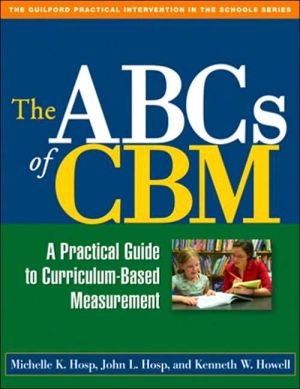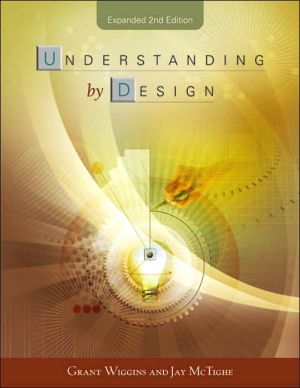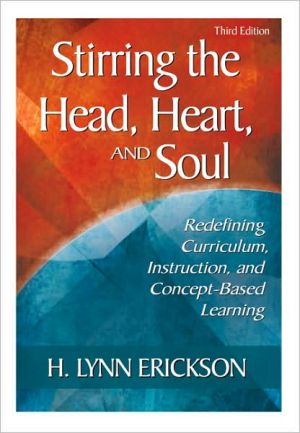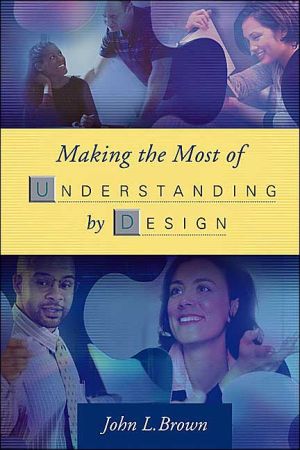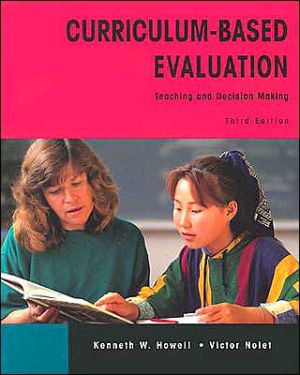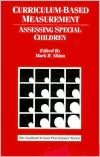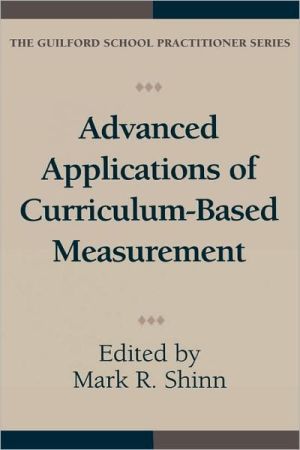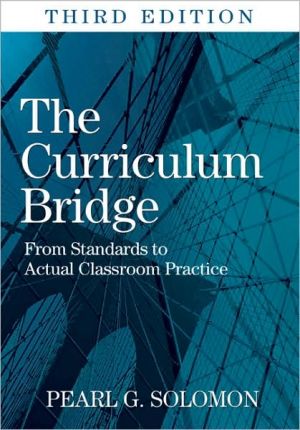ABCs of CBM: A Practical Guide to Curriculum-Based Measurement
This pragmatic, accessible book presents an empirically supported conceptual framework and hands-on instructions for conducting curriculum-based measurement (CBM) in grades K-8. The authors provide everything needed to evaluate student learning in reading, spelling, writing, and math; graph the resulting data; and use this information to make sound instructional decisions, plan interventions, and monitor progress. The role of CBM within a response-to-intervention model is also explained....
Search in google:
This pragmatic, accessible book presents an empirically supported conceptual framework and hands-on instructions for conducting curriculum-based measurement (CBM) in grades K-8. The authors provide everything needed to evaluate student learning in reading, spelling, writing, and math; graph the resulting data; and use this information to make sound instructional decisions, plan interventions, and monitor progress. The role of CBM within a response-to-intervention model is also explained. Every chapter includes helpful answers to frequently asked questions, and the appendices contain over 20 reproducible administration and scoring guides, forms, and planning checklists. The large-size format and lay-flat binding facilitate photocopying and day-to-day use. Children's Literature Designed for use in addressing the academic achievement of at-risk children, CBM developed out of the curriculum philosophies for learning disabled children. Popular in the last decade in teaching at-risk students to read, the philosophy is extended here to include writing, spelling, and math. This book, obviously, is the workbook for those in training to use CBM in the classroom. The book defines CBM, compares it to other forms of skill measurement, outlines the advantages, and explains how to use it. Its advantage, according to the authors, is that it can be used with existing curriculum or is "aligned" with the curriculum, as the jargon goes. Its methods provide teachers with a continuous data collection system that keeps track of each student's skill levels. Students are evaluated on how well they are doing individually, not compared to the whole group. The book gives examples of how to use spelling, reading, writing and math curriculum in a way that provides continuous data using your curriculum goals. A chapter about charting and graphing resulting data is included, as well as a discussion on what to do with the data. An appendix on reliability and validity, sample guides and forms, and an index are also included. CBM would be difficult to implement without some in-service training on its use.
What Is CBM and Why Should I Do It? 1What Will I Learn from This Book? 2What Is CBM? 2Why Were the Other Attributes, Like the Timing and Charting, Developed? 3How Is CBM Different from Other Forms of Measurement? 5Curriculum 5Alterable Variables 6Low-Inference Measures 6Criterion-Referenced Measures 7What Are the Main Advantages of CBM? 8What Kind of Decisions Can I Make with CBM Data? 9How Does CBM Relate to RTI? 9So CBM Does Just About Everything? 10Are There Different Types of CBM? 10General Outcome Measures 10Skills-Based Measures 11Mastery Measures 12I Have Never Seen CBM Being Used. If It's So Great, Why Isn't It More Popular? 14Is CBM Used in Special Education or General Education? 16Who Gives CBM Measures? 16If I Want to Use CBM, Does This Mean I'll Need to Make Tests Out of the Instructional Materials I'm Using? 17Where Do I Get CBM Materials? 18CBM for Assessment and Problem Solving 19What Do I Need to Know about Educational DecisionMaking? 20What Is a Criterion-Referenced Test? 22Are CBMs Standardized Tests? 24How Reliable and Valid Is CBM? 24Where Do They Get the Performance Standards Used in CBM? 25How Can CBM Be Used for Screening/Benchmarking? 26Screening Summary 27How Can CBM Be Used for Progress Monitoring? 27Progress Monitoring Summary 28So Where Do We Go from Here? 29How to Conduct Reading CBM 31Overview of Why to Conduct Reading CBM 31ORF CBM 32Materials Needed to Conduct ORF CBM 32Directions and Scoring Procedures for ORF CBM 35Maze CBM 40Materials Needed to Conduct Maze CBM 40Directions and Scoring Procedures for Maze CBM 42How Often Should ORF and Maze CBM Be Given? 44How Much Time Does It Take to Administer and Score Reading CBM? 46Expected Growth Rates and Norms for ORF and Maze CBM 46How Much Progress Can We Expect in Reading? 46Proficiency Levels or Benchmarks for Reading CBM 48Norms for Reading CBM 48Survey-Level Assessment with ORF CBM 51How to Use the Information to Write Reading IEP Goals and Objectives 51Frequently Asked Questions about Reading CBM 53How to Conduct Early Reading CBM 55Overview of Why to Conduct Early Reading CBM 55Overview of Dibels Measures 56Initial Sound Fluency and Phoneme Segmentation Fluency 56Nonsense Word Fluency 57Letter Naming Fluency 57LSF CBM 57Materials Needed to Conduct LSF CBM 57Directions and Scoring Procedures for LSF CBM 59WIF CBM 63Materials Needed to Conduct WIF CBM 63Directions and Scoring Procedure for WIF CBM 64How Often Should LSF and WIF CBM Be Given? 67How Much Time Does It Take to Administer and Score Early Reading CBM? 68Expected Growth Rates and Norms for LSF and WIF CBM 68Proficiency Levels or Benchmarks for Early Reading CBM 68Norms for Early Reading CBM 68How to Use the Information to Write Early Reading IEP Goals and Objectives 69Frequently Asked Questions about Early Reading CBM 70How to Conduct Spelling CBM Tessie Rose 72Overview of Why to Conduct Spelling CBM 72Materials Needed to Conduct Spelling CBM 72Spelling CBM Lists 73Directions and Scoring Procedures for Spelling CBM 75Directions for Spelling CBM 75Scoring Spelling CBM 76How Often Should Spelling CBM Be Given? 78How Much Time Does It Take to Administer and Score Spelling CBM? 78Expected Growth Rates and Norms for Spelling CBM 79How Much Progress Can We Expect in Spelling? 79Norms for Spelling CBM 80How to Use the Information to Write Spelling IEP Goals and Objectives 80Frequently Asked Questions about Spelling CBM 80How to Conduct Writing CBM Tessie Rose 84Overview of Why to Conduct Writing CBM 84Materials Needed to Conduct Writing CBM 85Writing CBM Story Starters 85Directions and Scoring Procedures for Writing CBM 88Directions for Writing CBM 88Scoring Writing CBM 88How Often Should Writing CBM Be Given? 93How Much Time Does It Take to Administer and Score Writing CBM? 93Expected Growth Bates and Norms for Writing CBM 93How to Use the Information to Write Writing IEP Goals and Objectives 94Frequently Asked Questions about Writing CBM 94How to Conduct Math CBM 97Overview of Why to Conduct Math CBM 97Materials Needed to Conduct Math CBM 98Math CBM Sheets 98Directions and Scoring Procedures for Math CBM 104Directions for Math CBM 104Scoring Math CBM 104How Often Should Math CBM Be Given? 108How Much Time Does It Take to Administer and Score Math CBM? 108Expected Growth Rates and Norms for Math CBM 109How Much Progress Can We Expect in Math? 109Proficiency Levels or Benchmarks for Math CBM 109Norms for Math CBM 109Survey-Level Assessment with Math CBM 110How to Use the Information to Write Math IEP Goals and Objectives 111Special Considerations That Apply to Math CBM 112Accuracy of Teacher/Examiner Copy 112Setting Up Math CBM Sheets to Provide Potential Diagnostic Information 112Early Numeracy 113Concepts and Applications 115Estimation 115Frequently Asked Questions About Math CBM 116Charting and Graphing Data to Help Make Decisions 118Procedures and Materials Needed to Chart CBM Data 118How to Set and Graph Goals 120End-of-Year Benchmarks 120Norms 121Intraindividual Framework 122Graphing Goals 123How Often Should Data Be Collected? 123Decision Rules to Help Educators Use the Data to Inform Instruction 124Considerations for Graphing and Charting the Data in the Content Areas 126The Use of CBM in Response to Intervention 126Computerized Graphing and Data Management Systems 127Material-Specific Programs 128Material-Flexible Programs 129Spreadsheet and Data Management Programs 130Frequently Asked Questions about Charting and Graphing CBM Data 130Planning to Use CBM-and Keeping It Going 132Developing a Plan for Using CBM 132Ten Steps to Using CBM before, during, and after Initial Implementation 133Hints on How to Get CBM Going 138Hints on How to Keep CBM Going 138Frequently Asked Questions about Planning and Using CBM 139Summary of Validity and Reliability Studies for CBM 141Reproducible Quick Guides and Forms for Conducting CBM 143References 163Index 167
\ From the Publisher"Up to date, comprehensive, and practical. Contains useful forms and norms."--Terry Bontrager, PhD, Department of Counseling and School Psychology, University Of Massachusetts Boston\ "This book is exactly what teachers need to get started using CBM or to refine and extend their current use. I would highly recommend this book to anyone who is interested in CBM. I have flagged several pages so that I can readily locate the information for future use."--Sharon Vaughn, PhD, Department of Special Education, University of Texas at Austin "This book is exactly what teachers need to get started using CBM or to refine and extend their current use. I would highly recommend this book to anyone who is interested in CBM. I have flagged several pages so that I can readily locate the information for future use."--Sharon Vaughn, PhD, University of Texas at Austin "The ABCs of CBM is an excellent treatment of the nature and purposes of CBM, and provides resources for applying the approach across several academic skills areas. Progress monitoring and formative evaluation are increasingly important in general, remedial, and special education. I plan to adopt this book as a text for courses in assessment and academic intervention taught to undergraduate and graduate students."--Dan Reschly, PhD, Peabody College of Vanderbilt University "This text provides a useful introduction to the nuts and bolts of CBM administration, interpretation, and application. It is a useful primer to support introductory coursework on CBM. The material is also relevant for field-based administrators, teachers, paraprofessionals, and school psychologists who are interested in a direct and nontechnical presentation of CBM."--Theodore J. Christ, PhD, School Psychology Program, University of Minnesota\ \ \ \ \ \ NASP Communiqu�"As a CBM trainer for almost 16 years, I can now throw out my handout packet entitled What's CBM and Why You and Your Students Need It and replace it with this powerful little (172 pages) gem for my graduate assessment class and for the Illinois school district personnel who call my office weekly asking about CBM."--NASP Communiqué\ \ \ Children's Literature\ - Meredith Kiger\ Designed for use in addressing the academic achievement of at-risk children, CBM developed out of the curriculum philosophies for learning disabled children. Popular in the last decade in teaching at-risk students to read, the philosophy is extended here to include writing, spelling, and math. This book, obviously, is the workbook for those in training to use CBM in the classroom. The book defines CBM, compares it to other forms of skill measurement, outlines the advantages, and explains how to use it. Its advantage, according to the authors, is that it can be used with existing curriculum or is "aligned" with the curriculum, as the jargon goes. Its methods provide teachers with a continuous data collection system that keeps track of each student's skill levels. Students are evaluated on how well they are doing individually, not compared to the whole group. The book gives examples of how to use spelling, reading, writing and math curriculum in a way that provides continuous data using your curriculum goals. A chapter about charting and graphing resulting data is included, as well as a discussion on what to do with the data. An appendix on reliability and validity, sample guides and forms, and an index are also included. CBM would be difficult to implement without some in-service training on its use.\ \
